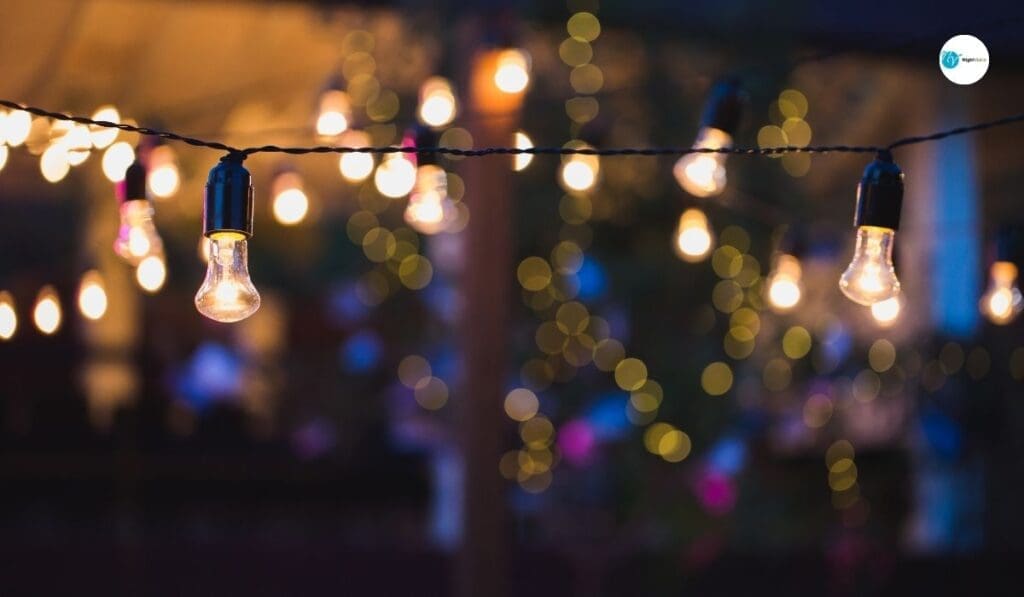Outdoor lighting systems enhance the beauty and functionality of our outdoor spaces, providing safety and aesthetic appeal.
However, like any other electrical system, they require regular maintenance and occasional troubleshooting to ensure they function correctly.
This guide will walk you through the essential steps of maintaining and troubleshooting outdoor lighting systems, with a particular focus on the critical aspects of “outdoor lighting troubleshooting.”
Routine Maintenance for Outdoor Lighting Systems
Regular maintenance of outdoor lighting is crucial for its longevity and efficiency.
Here’s how to keep your system in top shape:
Inspect Regularly
Perform routine inspections at least once a month.
Look for signs of wear and tear, such as frayed wires, corroded fixtures, or damaged bulbs.
Clean Fixtures
Outdoor lights can accumulate dirt, dust, and debris, which can reduce their brightness and effectiveness.
Use a soft cloth and mild soap to clean the fixtures.
Ensure that they are scorched before reassembling.
Check for Corrosion
Outdoor lighting fixtures are exposed to the elements, making them susceptible to corrosion.
Inspect the fixtures for any rust or corrosion, and apply a protective coating if necessary.
Replace Bulbs
Burnt-out bulbs are a common issue.
Regularly check and replace any non-functional bulbs to ensure your lighting system remains bright and practical.
Trim Surrounding Vegetation
Overgrown plants can obstruct light paths and cause shadows.
Trim any vegetation that may be covering or blocking the light fixtures.
Troubleshooting Common Outdoor Lighting Problems
When problems arise, it’s essential to troubleshoot efficiently to identify and rectify issues promptly.
Here are some common problems and solutions for outdoor lighting troubleshooting:
Lights Not Turning On
Check the Power Source
Ensure that the power supply is working.
Check your electrical panel for tripped circuit breakers or blown fuses.
Inspect the Wiring
Look for loose or damaged wires.
Tighten any loose connections and replace damaged wiring.
Test the Bulbs
Replace the bulbs with new ones to determine if the problem is with the bulbs themselves.
Examine the Timer or Sensor
If your system uses a timer or sensor, check that it is set correctly and functioning properly. Replace faulty timers or sensors.
Flickering Lights
Check the Bulbs
Flickering can be caused by loose bulbs.
Tighten the bulbs to ensure a proper connection.
Inspect the Wiring
Loose or damaged wiring can also cause flickering.
Secure any loose wires and replace damaged ones.
Voltage Fluctuations
Voltage inconsistencies can lead to flickering. Consider using a voltage stabilizer if this is a recurring issue.
Dim Lights
Clean the Fixtures
Dirt and debris on the fixtures can dim the light output. Clean the fixtures thoroughly.
Check the Bulbs
Ensure the bulbs are of the correct wattage and not nearing the end of their life.
Inspect the Transformer
If you have a low-voltage lighting system, check the transformer.
An overloaded transformer can cause dimming. If necessary, consider upgrading to a higher-capacity transformer.
Short Circuits
Inspect the Wiring
Short circuits are often due to damaged insulation or exposed wires.
Carefully inspect the wiring and replace any damaged sections.
Check for Water Damage
Outdoor lights are vulnerable to water intrusion.
Ensure all fixtures are waterproof and that connections are adequately sealed.
Lights Staying On During Daytime
Adjust the Sensor
If your system uses a daylight sensor, ensure it is not obstructed and is receiving adequate sunlight.
Check the Timer Settings
Verify that the timer is set correctly.
Incorrect settings can cause lights to stay on during the day.
Uneven Lighting
Adjust Fixture Placement
Ensure that the fixtures are placed correctly to provide even lighting.
Reposition fixtures if necessary.
Check for Obstructions
Remove any obstructions that may be causing uneven lighting patterns.
Tips for Effective Outdoor Lighting Troubleshooting
Use Proper Tools
Having the right tools, such as a multimeter, wire strippers, and screwdrivers, can make troubleshooting more efficient.
Keep a Maintenance Log
Maintain a log of all inspections, maintenance, and repairs.
This can help you track recurring issues and identify patterns.
Consult the Manual
Refer to the manufacturer’s manual for specific troubleshooting steps and guidelines tailored to your lighting system.
Seek Professional Help
For complex issues or if you are unsure about handling electrical components, it’s best to seek help from a licensed electrician.
Advanced Troubleshooting Techniques
Voltage Testing
Use a Multimeter
A multimeter is an essential tool for diagnosing electrical issues.
It can be used to check the voltage at different points in your lighting system to identify drops or inconsistencies.
Test the Transformer Output
For low-voltage systems, test the transformer’s output.
Ensure it matches the required voltage for your lights. If the output is too low, it might indicate an overloaded or faulty transformer.
Inspecting Underground Wiring
Check for Damage
If your outdoor lighting system uses underground wiring, inspect it for any signs of damage caused by digging, rodents, or weather conditions.
Use Conduit Protection
Ensure that all underground wires are protected with conduit to prevent physical damage and exposure to moisture.
Diagnosing Sensor Issues
Clean the Sensor
Dirt and debris can obstruct the sensor’s view.
Clean it regularly to ensure it functions correctly.
Test Sensitivity Settings
Most motion and daylight sensors have adjustable sensitivity settings.
Experiment with these settings to find the optimal configuration for your environment.
Preventive Measures for Outdoor Lighting Systems
Weatherproofing
Seal Connections
Use waterproof connectors and sealants to protect connections from moisture.
This is particularly important in areas with high rainfall or humidity.
Choose Weather-Resistant Fixtures
Invest in high-quality, weather-resistant fixtures designed to withstand harsh outdoor conditions.
Scheduled Maintenance
Seasonal Checks
Perform thorough checks at the start of each season.
Weather changes can affect the integrity of your lighting system.
Annual Professional Inspection
Consider having a licensed electrician inspect your system annually.
They can identify and address potential issues before they become serious problems.
Upgrading Components
Use LED Bulbs
LED bulbs are more energy-efficient and have a longer lifespan compared to traditional incandescent or halogen bulbs.
They also produce less heat, reducing the risk of fire.
Install Smart Controls
Intelligent lighting controls allow you to manage your outdoor lights remotely.

These systems can include features like automatic scheduling, dimming, and integration with home automation systems.
Common Outdoor Lighting Issues and Solutions
GFCI Outlets Tripping
Inspect for Moisture
Ground Fault Circuit Interrupters (GFCI) are designed to cut power when they detect moisture. Check all outlets and fixtures for signs of water intrusion.
Test the GFCI
Press the “reset” button on the GFCI outlet.
If it continues to trip, there might be a deeper electrical issue that needs professional attention.
System-Wide Failure
Check the Main Power Supply
Ensure the main power supply to the lighting system is intact.
In the main electrical panel, look for blown fuses or tripped breakers.
Inspect the Central Control Unit
If your system uses a central control unit, ensure it is functioning correctly.
Reset the unit or consult the manufacturer’s troubleshooting guide.
Conclusion
Maintaining and troubleshooting your outdoor lighting system is vital to preserving the beauty, safety, and functionality of your outdoor spaces.
Regular inspections, preventive measures, and effective troubleshooting techniques can save you time and money in the long run.
By incorporating advanced tools, weatherproofing practices, and energy-efficient upgrades, you can extend the life of your lighting system and enhance its performance.
Whether you’re dealing with a simple bulb replacement or a more complex electrical issue, this comprehensive guide equips you with the knowledge to address and resolve a wide range of outdoor lighting problems.
Embrace these practices to enjoy a consistently illuminated and inviting outdoor environment year-round.
If you need professional assistance or have any questions about maintaining and troubleshooting your outdoor lighting systems, don’t hesitate to contact us at NightVision Outdoor Lighting.
We’re here to help ensure your outdoor spaces remain brilliantly lit and safe.
FAQs
Why is regular maintenance necessary for outdoor lighting systems?
Regular maintenance ensures the longevity and efficiency of your outdoor lighting system. It helps prevent problems before they become serious, ensuring your lights remain functional and practical.
How often should I inspect my outdoor lighting system?
Perform routine inspections at least once a month to check for signs of wear and tear, such as frayed wires, corroded fixtures, or damaged bulbs.
What is the best way to clean outdoor light fixtures?
Use a soft cloth and mild soap to clean the fixtures. Make sure they are scorched before reassembling to prevent any electrical issues.
How do I protect my outdoor lighting fixtures from corrosion?
Regularly inspect the fixtures for rust or corrosion. If necessary, apply a protective coating to metal parts to extend the lifespan of your fixtures.
What tools are essential for outdoor lighting troubleshooting?
A multimeter, wire strippers, and screwdrivers are essential tools that can make troubleshooting more efficient.
Why should I keep a maintenance log for my outdoor lighting system?
Keeping a log of all inspections, maintenance, and repairs helps track recurring issues and identify patterns, making future troubleshooting easier.
When should I seek professional help for my outdoor lighting system?
For complex issues or if you are unsure about handling electrical components, it’s best to seek help from a licensed electrician.




